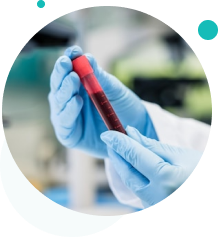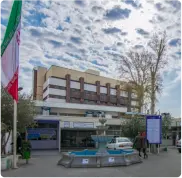Bone Marrow Transplant in Iran
Bone marrow transplant in Iran is one of the medical services that is performed with low cost and high success rate.IranHealthAgency, as a health provider, can help you get bone marrow services in Iran easily and quickly. these services include:
- Visa Requirements
- legal process
- booking flight
- Hotel
- all medicine and hospital services
For people with serious blood diseases and cancers, bone marrow transplantation (BMT) has become a symbol of hope that can save their lives. In Iran, this medical miracle has been making significant progress, giving many people who had been given bad news a new start in life.
With over a thousand bone marrow transplants, Iran leads the globe in this field, particularly for thalassemia patients. People travel to the nation for this kind of medical treatment because of its medical expertise and affordable prices ($27,000 instead of $400,000 in the US).
As we look to the future, Iran’s dedication to success in bone marrow transplantation will likely make it even more of a place where people worldwide can find hope and healing.
So. if you need to do a Marrow Transplant, Follow us to say what you need and what you want;
Bone Marrow Transplant Process in Iran
The bone marrow transplantation process in Iran includes many tests before the operation, a well-planned process, and a lot of care afterward. Of course, all of this is done at a lower cost and with a high success rate.
1 Free consultation with Doctor
First, you can contact IranHealthAgency, a health provider in Iran, to book a free consultation with top doctors for you.
You need to talk honestly with your doctor to know about your conditions and be ready for pre-testing if you need a Marrow transplant or not.


2 Pre-Tests Required
A lot of tests are done on the patient before the surgery to make sure their body is strong enough for the transplant. Some of these are:
- Blood Tests: to see how well the liver and kidneys are working and to look for diseases that could spread.
- Imaging Tests: An electrocardiogram (EKG) checks the heartbeat, an echocardiogram checks the heart, and a CT scan checks the organs’ health. Chest X-rays can detect pulmonary problems.
- Biopsy: By doing this, it is possible to determine the likelihood that the cancer will return after the transplant.
3 Bone Marrow Transplant Procedure in Iran
The second step is planning a well-structured procedure! In this step, you need:
Consultation with your Doctor: The doctor will discuss the process, possible risks, and what to expect after the transfer with the patient and their family.


4 After surgery
After surgery, there is a recovery period that usually lasts between 2 and 6 weeks. Patients may need to stay in the hospital or visit the donation center daily.
During these steps, IHA helps you in:
- Accommodation
- Translators
- companion nurses
- city tours
So, People from other countries (foreign patients)are more comfortable and have an easier time with the process.
What makes Iran an ideal location for bone marrow transplants?
There is still the question after all of this, that is to ask, why Iran should be your choice for your transplant procedure! We break it down into three main reasons:
This is the heading
- Iran has a well-developed system for bone marrow transplants, with many clinics having 20-25 years of experience in the field.
- The country ranks third globally regarding the technology and expertise available for BMT, following only a few other countries like the USA and Germany.
- The Hematology-Oncology and Stem Cell Transplantation Research Center in Tehran is a notable institution affiliated with the Tehran University of Medical Sciences and has been operational since 1991.
Cost and Affordability
- The cost of a bone marrow transplant in Iran is significantly lower than in many other countries. It ranges from $20,000 to $80,000, which is about 70% less than the cost in many European countries.
- This affordability makes Iran an attractive destination for patients seeking high-quality medical care at a lower price.
Success Rates and Research
- The success rate of BMT also called Bone marrow transplant in Iran is high, with many patients living longer and being cured thanks to advances in cancer research and treatment.
- Iran’s transplantation centers communicate with international organizations like the International Blood and Marrow Transplantation Registry (IBMTR) and the European Group for Blood and Marrow Transplantation (EBMT), ensuring they stay updated with the latest therapeutic methods and protocols.
Best Hospital center for bone marrow transplantation in Iran

Mom Center
Tehran

Atiyeh Hospital
Tehran

Razi Hospital
Tehran

Erfan Hospital
Tehran